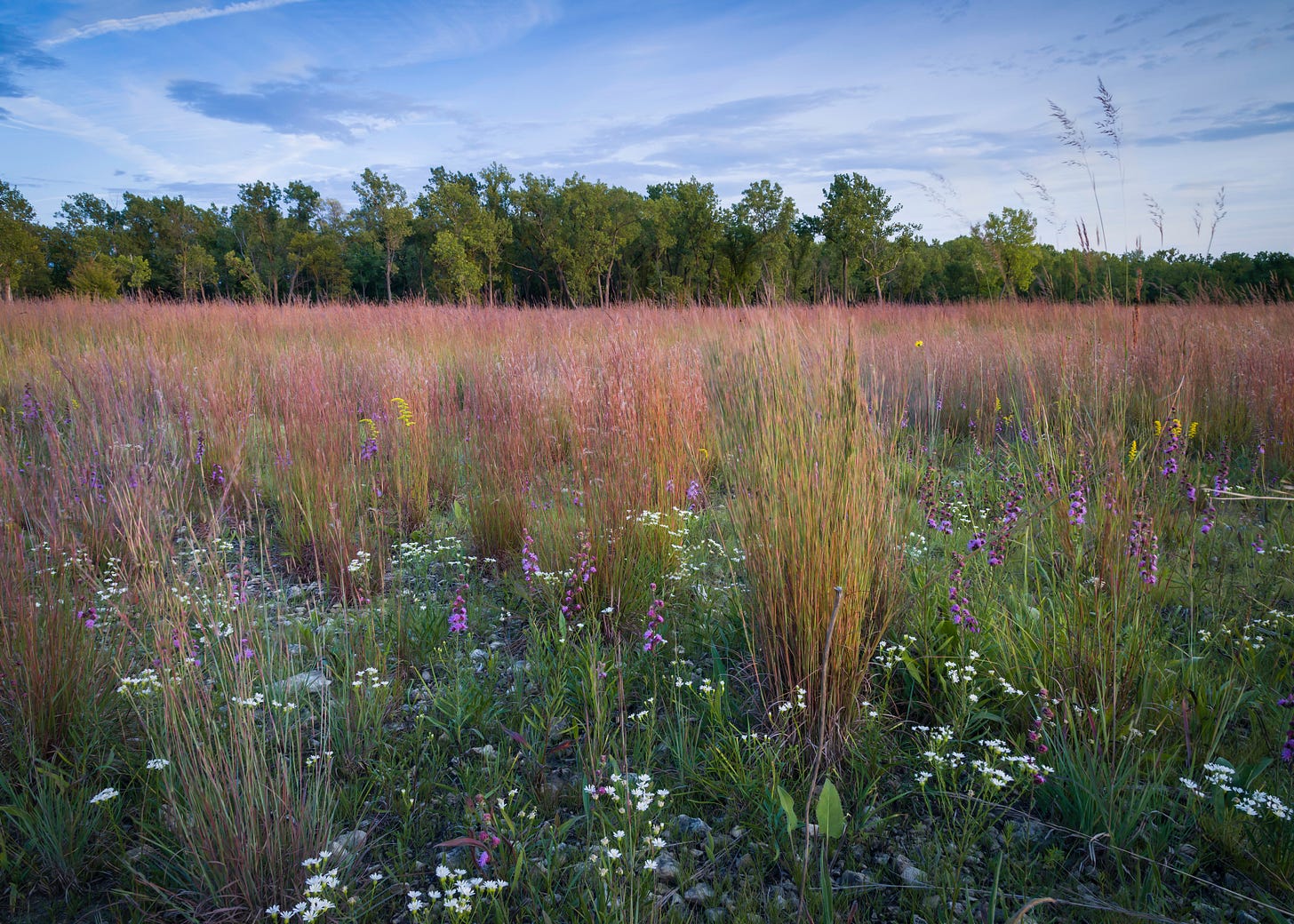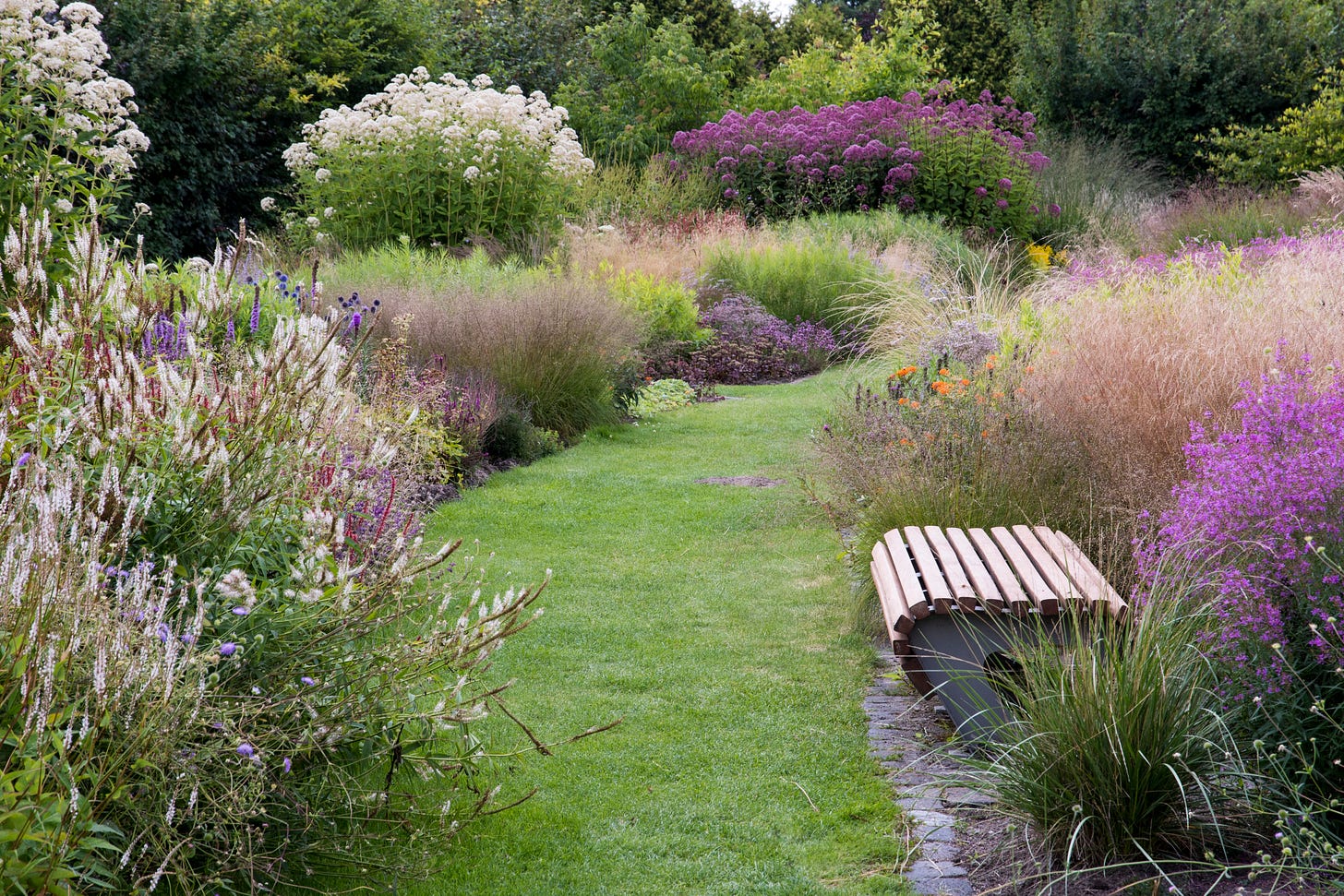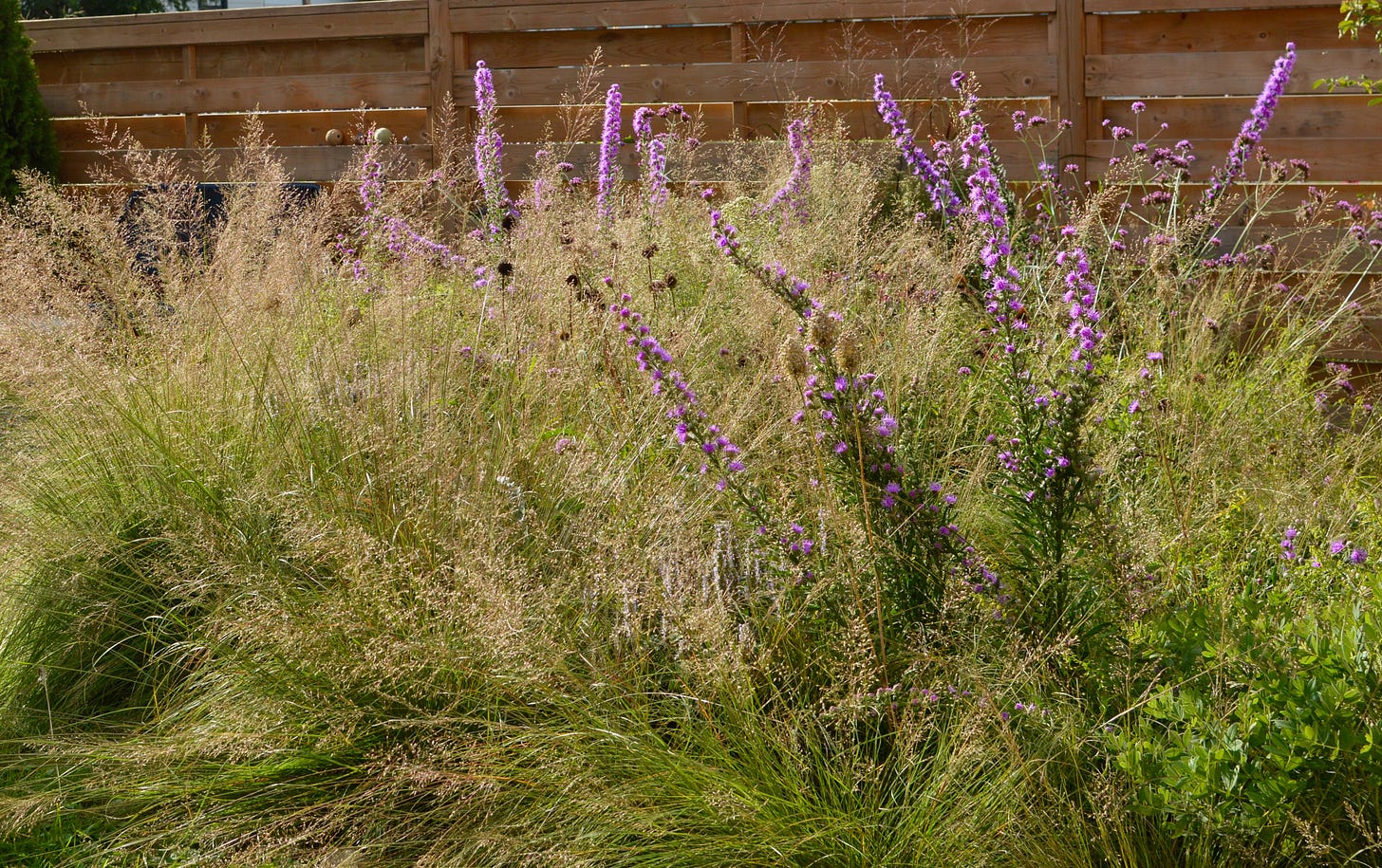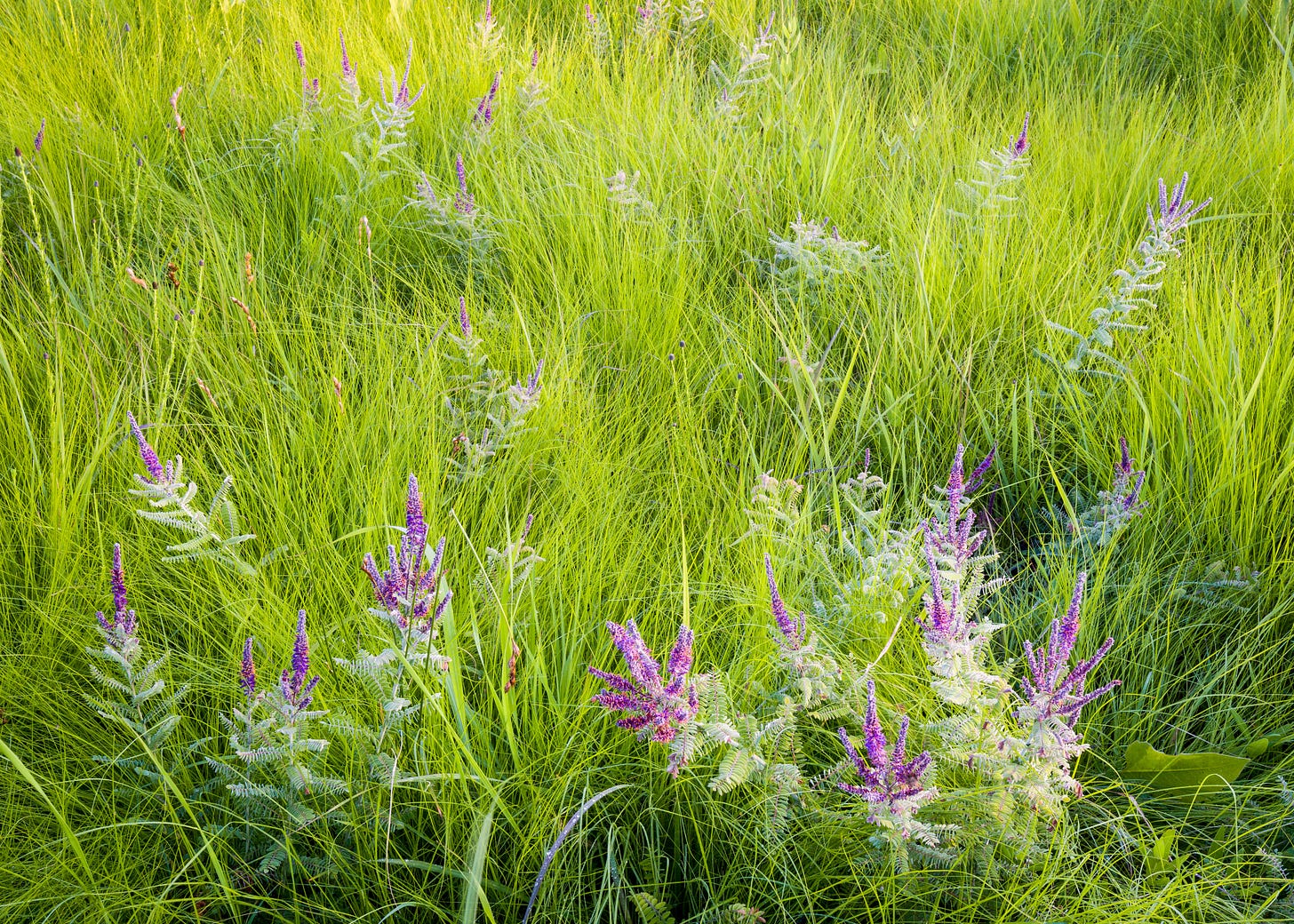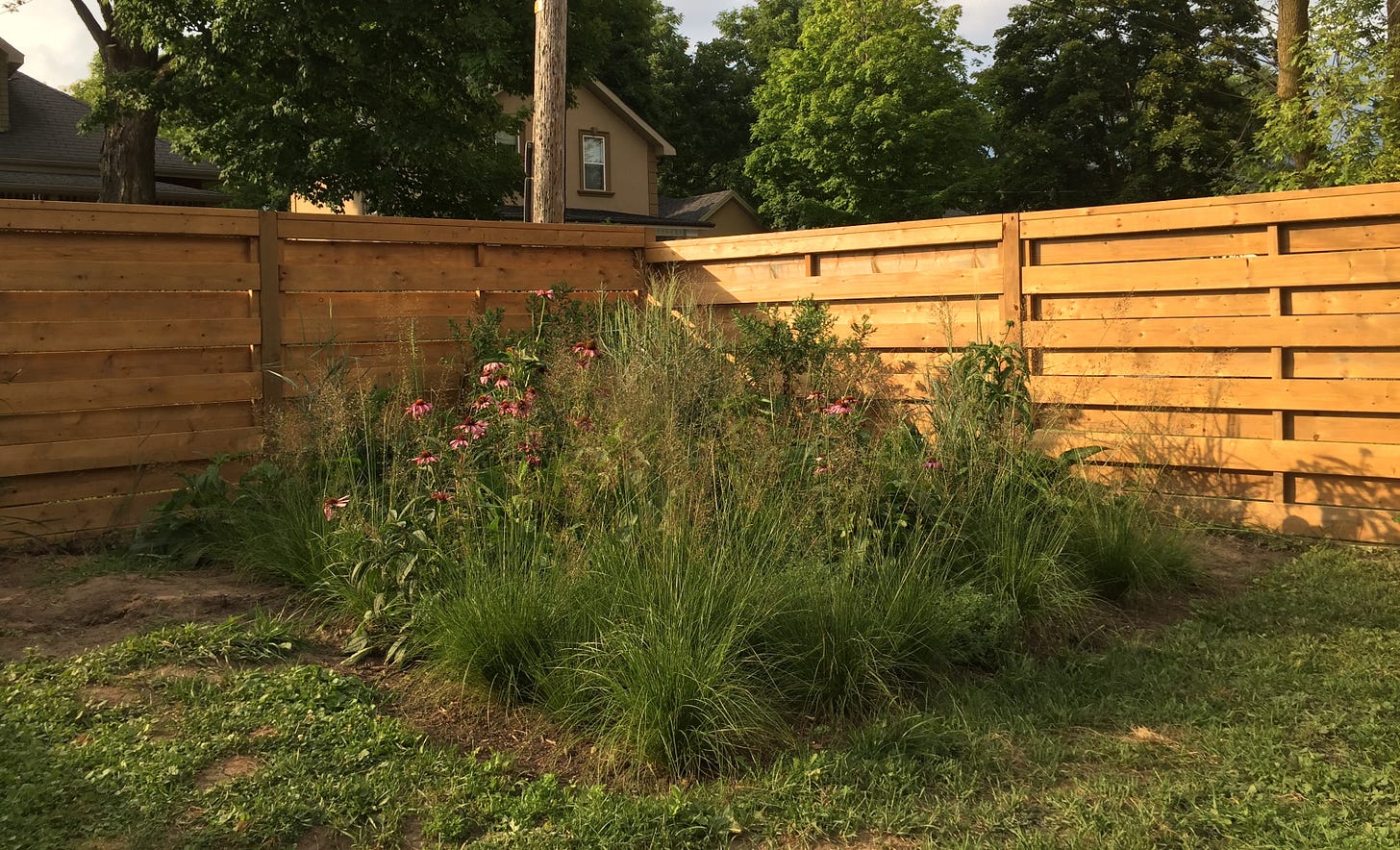Hay fever: the story of how I went crazy for grass
In my last (and first-ever) post, I talked about Western culture’s hostility toward grass and the steep ecological cost we pay for it. But, for the most part, I left my own personal experience out of it. I didn’t tell the story of how I came to be aware of this tragic situation. Of how grass was jolted from the background to the foreground of my consciousness. Of how I became (strangely, some would say) obsessed with grass.
Well, in this installment of the blog, I attempt to tell the story of this obsession–though, to be honest, I still feel a bit foggy about the chain of events that led me here. The full picture may only emerge slowly with time, but here’s what I would say today:
I didn’t grow up with prairies or ornamental grasses. I did grow up with a wild garden, however. In my teenage years, my parents grew tired of the endless maintenance required to keep a lawn tidy and green and critical of its environmental impact. They retired their lawnmower in the tin shed at the back of our yard and let everything–the flowers, the grasses, the shrubs–run riot. Soon, the borders and lawn merged into one giant tangle of vegetation.
It must have been choked full of weeds, and I’m sure it frightened our neighbours, an elderly couple who kept neat rows of vegetables. But I loved its lush, full, chaotic feel. My parents were ahead of their time, no doubt. Perhaps this wild garden predisposed me to love long grass.
Flash forward some 25 years or so.
My wife and I have just bought a house in Guelph, Ontario—a corner lot with a thin border of plants that was overgrown and weedy yet without feeling full or lush. A raspberry plant had gone rogue and its prickly stems sprouted up from every corner of the bed.
At the time, I had next to no interest in ornamental gardening. I always thought I’d grow veggies when I had my own yard. But the yard felt neglected and in need of aesthetic enhancement of some kind.
I had no clue where to begin. I didn’t have a favourite flower or tree. So I turned to the internet for inspiration, scouring Instagram and Pinterest for images of gardens that appealed to me.
The algorithms went to work and I was soon struck with inspiration. It was gardens by Piet Oudolf, the illustrious Dutch garden designer and leading proponent of the New Perennial movement (known to many in the naturalistic gardening world simply as “the master”), that did the trick. His gardens were wild and romantic–unlike any I had seen before. They were revelations!
Though I felt an immediate attraction to his work, I had trouble identifying what I saw in the photos. How was he creating these impressionistic effects? Why did these gardens look so different from anything I’d seen before?
With time, I discovered that one of the signature elements of Oudolf’s style–and the one that struck me most forcefully–was his use of ornamental grasses.
Often, the flowers of these grasses would form a mist, weaving together around the other plants and bringing them together into one delicate, frothy mass. The grasses and their flowers became the luminous, green-gold background against which bolder flowers popped.
This was just one effect, however. At other times, the grasses could be short and fountain-like, creating a sea of soft, rolling mounds. Or they could be tall and architectural with stately plumes and striking silhouettes.
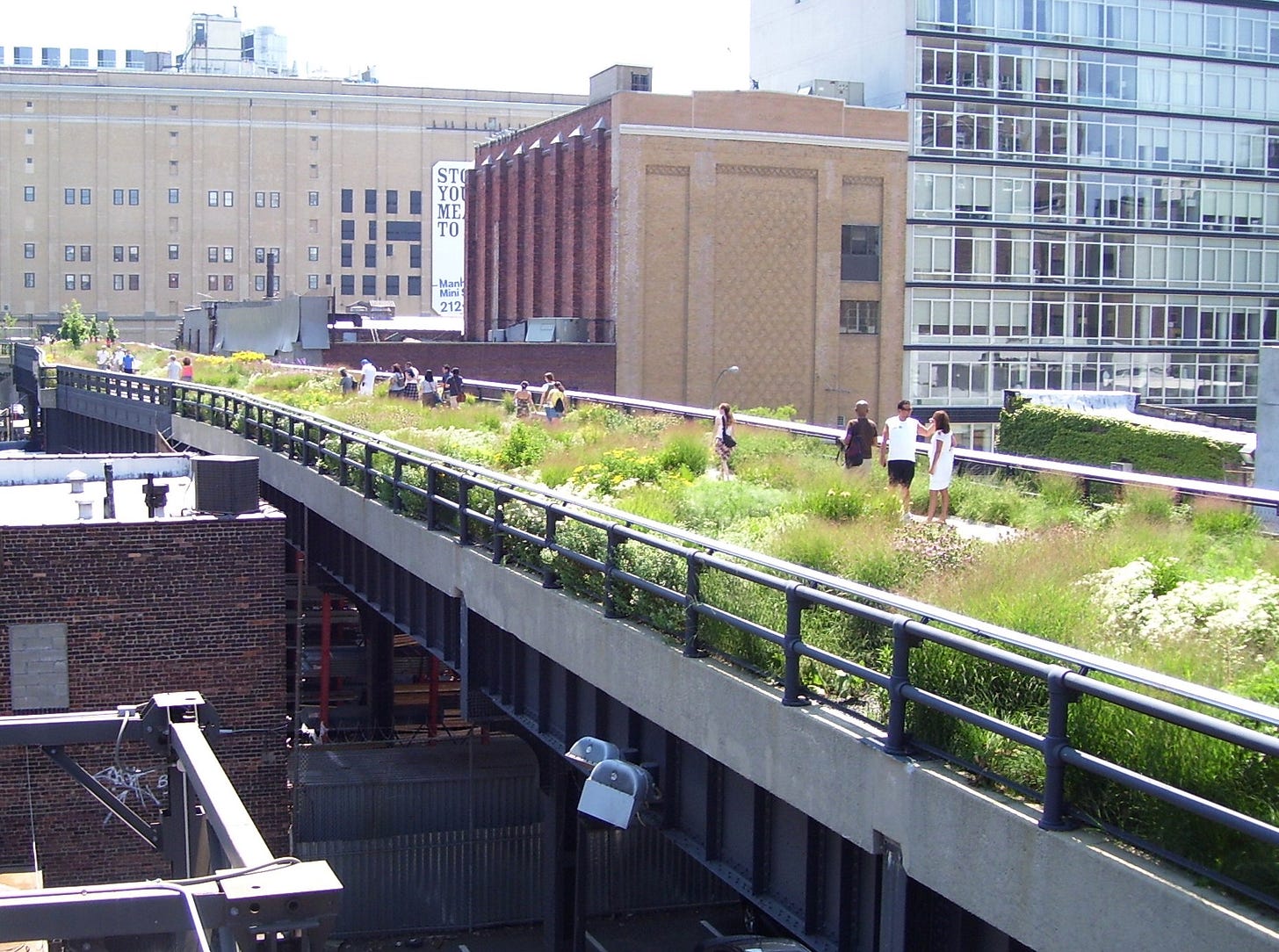
Almost always they brought incredible texture to the garden, like an expensive fabric.
The irony of these meadow-inspired designs was that though grass could be used to unify a garden, stitching together the flowers and trees and plants in an intricate tapestry, they simultaneously made a garden seem looser, wilder, more free.
I was so smitten with Oudolf’s grasses that I committed myself to an ambitious plan: I would gradually unfurl a woolly carpet of ornamental grasses across every inch of my corner lot property. I would create a mini-prairie in the heart of downtown Guelph.
But where to start?
All grass converts need a first grass. The particular species that tutors them in the loveliness of the family. For me, that grass is Prairie Dropseed or Sporobolus Heterolepis.
It’s one of the fuzzy grasses (not a technical term). In late summer, it sends up wand-like inflorescences that sparkle when backlit and nod in the wind. Then, in Fall, the grass turns warm shades of yellow and orange.
Best of all, it is the only grass with the fragrance of buttered popcorn! No joke. (Haters say it smells like cilantro or crayons, but ignore them.)
I think I first saw the grass in a photo of the Lurie, a Piet Oudolf-designed garden in Chicago. The photo was taken in late Spring when prairie dropseed forms fine, silky mounds. At this time of year, they have a whimsical quality. A friend said they look like Cousin It–and they do. But my initial association was with Dr. Seuss. Perhaps it’s because they somewhat resemble the truffula tree. Or perhaps it’s just that they capture the sense of wildness and abundance that characterize Seuss’s landscapes.
Something about this combination of wildness and whimsy seems key to the grass phenomenon. They are alien to our sense of order in the garden, to formal traditions of clean, hard geometric shapes. And yet they represent a non-threatening and amenable sort of disorder. They beckon to us. When I see mounds of grass, I want to curl up on them and fall asleep.
I was pleased to learn that prairie dropseed was native to Ontario, though it’s rare in the province, found mainly in the shallow soils of alvars along the Great Lakes. There are populations on Manitoulin Island, along the Bruce Penninsula, and in Ottawa, Muskoka, and Prince Edward County. One day, I’d like to see it growing in the wild. (Stay tuned for my alvar post!)
Charmed, I planned a prairie dropseed meadow in my backyard. In putting it together, I made every mistake possible. I planted too tightly. Paid no attention to the relative heights of the different plants. Had long periods of the growing season with no blooms. Ignored the very obvious need in my property for some form of screening. Created a garden bed in a ridiculously arbitrary square shape.
With time, I’ve made progress. I’m still seeking the perfect balance of flowers to grass. I continue to fiddle with my flower choices. And small trees, planted around the edges of the planting, keep dying in my dry-ish soil. But after six years or so, it’s beginning to resemble the garden I envisioned when I began.
And this passion has not subsided.
I am expanding my garden, creating new beds each year. I’ve branched out beyond my trusty dropseeds. I now have sideoats grama, big bluestem, switchgrass, purple lovegrass, prairie junegrass, little bluestem, autumn moor grass, numerous sedges and more.
Even in the winter, with snow piled thick on the garden, grass is never far from my mind. In February or March, I set up fluorescent lights and a heating pad in my basement. I squint at instructions on tiny seed packets printed with the names, Schizachyrium scoparium, Bouteloua curtipendula—words that have become sonorous and deep to me, promises of future happiness.
Sometimes I wonder whether grass isn’t only on my mind, but also somehow in my mind. Perhaps, a stray seed slipped down my ear canal and is now sprouting out of pink brain tissue, spreading by rhizome across every lobe and cortex, slowly taking over.
I hear one voice and one voice only. It says: you will plant grass.
Links: The lawn is dead; long live grass!
Recently, the conventional grass lawn has become a battleground. On one side, there are eco-conscious gardeners who point out that lawns are resource-hungry monocultures, offering little ecological or wildlife value. They say enough is enough: Kill your lawn and create a garden.
But, as more people make this shift, there’s blowback from neighbourhood associations and city officials, who want to maintain tidy (some would say homogenous) appearances at all costs. In the New York Times, Cara Buckley tells the story of a Maryland couple who were ordered by their homeowner association to replace their wildlife garden with a lawn. They sued and won. Now, in Maryland, these associations are no longer allowed to force residents to grow lawns. Hopefully, this is a sign of things to come!
Poet Camille Dungy’s recent book, Soil: The Story of a Black Mother's Garden, recounts her experience replacing her lawn with a wildlife garden. In addition to the rules imposed by neighbourhood groups about what could and could not be planted, she found herself in conflict with the canon of nature writing:
“The (nearly always white) men and women who claim to be models for how to truly experience the natural world always seemed to do so in solitude. Just one guy – so often a guy – with no evidence of family or anyone to worry about but himself.”
Dungy finds the absence of community and history in these visions troubling, and proposes, as an alternative to the idealization of “far-distant, unpopulated, sublime spaces”, gardening as a mode of engaging with both nature and culture–of seeking to “diversify the world around us from the ground up.”Of course, the end of the lawns need not mean the end of grass–just the end of certain kinds of grasses. Native grasses left to grow long and flower are perfect replacements for turf grass. Not only do they require less water to stay green, they also feed wildlife, such as butterfly and moth caterpillars. Sedges, which are not technically grasses but rather grass-like plants, are a perfect choice for many situations. Recently, the Mount Cuba Centre, a native plant garden and research facility in Delaware, completed a four-year trial to determine the best-performing varieties. Here’s a fascinating interview with Sam Hoadley, manager of Horticultural Research at Mt. Cuba, on A Way to Garden.
Grass Quote of the Month
“We want shaven carpets of grass here and there, but what cruel nonsense both to men and grass it is to shave as many foolish men shave their faces! There are indeed places where they boast of mowing forty acres! Who would not rather see the waving grass with countless flowers than a close shaven surface without a blossom? Imagine the labour wasted in this ridiculous labour of cutting the heads off flowers and grass. Let the grass grow till fit to cut for hay, and we may enjoy in it a world of lovely flowers that will blossom and perfect their growth before the grass has to be mown; more than one person who has carried out the ideas expressed in this book has waving lawns of feathery grass where he used to shave the grass every ten days; a prairie of flowers where a daisy was not allowed to peep; and some addition to his hay crop as he allows the grass to grow till it is fit for that purpose.”
William Robinson, The Wild Garden (1883)




